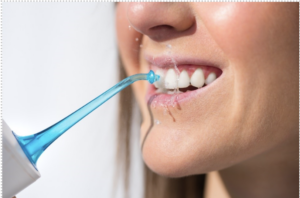Flossing your teeth is critical to good oral hygiene and a healthier, brighter smile. Although the process may seem simple, there are a few essential points to learn to do it correctly. This guide will cover what you need to know about mastering the flossing technique.
Should You Floss or Brush First?
Researchers found in a clinical trial that flossing before brushing was the most efficient for thoroughly removing dental plaque. The group that flossed first and then brushed had significantly more plaque removed than the group flossed after brushing.
A benefit of flossing after brushing with toothpaste is a more complete delivery of the paste’s active ingredients. Gums have very high fine blood vessels called capillaries. Capillaries are very fine blood vessels that absorb various nutrients, toxins, and/or drugs into the blood, then deliver to all other major and minor organs. The gum skin is highly absorbable, and when you floss you are delivering active, therapeutic agents deeper into the gum pockets. This deeper delivery helps the active ingredients to work faster and better.
Because the gum skin is very absorbable, it is important that you pay attention to toxins in many toothpastes. At Dental Arts & Wellness, we offer customized, safe & effective product consultation for our patients. If you cannot find the information, there is an excellent site for you to check your toothpaste’s ingredients and safety. How safe is yours? Check the product safety on this link: https://orlcares.com/pages/sensodyne-toothpaste
If you tend to skip flossing, it is helpful to floss first. Once you develop a good habit of doing both flossing and brushing, it is time to floss after brushing to get the most out of your home care.
How to Floss Correctly
-
Cut a Long Piece of Floss.
To get started, wind an 18-inch length of dental floss around the middle finger of one hand. Then take the remaining ends with the other hand, leaving roughly two inches between each forefinger. It will help if you have a firm grip on both sections of floss to make it easier to maneuver around your teeth.
-
Wrap the Floss Around Your Fingers.
When you’re ready to begin, wrap the dental floss around your forefingers, with roughly two inches of floss between them. It will help if you have a firm grip on both sections of floss to make it easier to maneuver around your teeth. Keep as much pressure consistent on each side as you slide the floss up and down against both sides of every tooth.
-
Slide the Floss Between Each Tooth and Gently Scrape Along the Sides of Each Tooth
As you’re sliding the floss between each tooth, be careful not to snap or jerk it, as this can damage both your gums and the dentin layer of your teeth. Instead, gently guide it up and down until you reach the gum line. Once you reach the gum line, curve the floss around the base of each tooth into a C-shape and use a gentle up and down motion to clean the sides of both the top and bottom teeth. Ensure you hug the floss to the teeth. Do not rub the floss against your gums, as this can cause tiny tears in your gums and damage them.
-
Unwind New Sections of Floss as You Go for a Fresh Start Every Time.
It’s essential to unwind new sections regularly. Doing so helps ensure you clean with fresh floss each time you start a new spot between two teeth. You can break off up to 18 inches of floss and wind the majority around your middle fingers, leaving 1-2 inches stretched between them for easy maneuvering.
Common Flossing Mistakes
-
Flossing your gums instead of your teeth.
The purpose of flossing is to rub plaque off of your teeth. You want to hug your teeth with the floss, not your gums. If you rub the floss against your gums, you can cause tiny tears in your gums and damage them.
-
Flossing too roughly
Flossing too roughly can damage your gums. Never ‘saw’ at the tooth’s base, as this causes friction on your gums and can wear down tooth enamel. Avoid snapping the floss between your teeth, as this could cut or slice the gum tissue. Try working it back and forth while applying gentle pressure to get the floss between two tightly packed teeth.
-
Not flossing around the entire tooth on each side.
Make sure you get the entire tooth; you need to floss between it and each of its adjacent teeth. Otherwise, bacteria can quickly accumulate and start a cavity on the un-flossed side.
Water Flossers

Waterpiks or water flossers are handy to remove a bulk of plaque that got trapped in between the teeth. If you have receded gums and bone loss, you are more likely to have larger space between the teeth and the gums. If you are troubled with food packing into gum space, I highly recommend using water flossers before brushing. A study comparing the effectiveness of water flossing to flossing with string floss found that water flossers had an 81.6 % reduction of plaque between their teeth compared to only 63.4% for those using string floss.
Water flossers can significantly help those with tight spaces between their teeth and who find it difficult to use floss.
Final Words
To maintain good oral health, floss your teeth at least once a day and brush your teeth after meals. Get regular dental checkups to monitor your oral health. Please contact us if you have questions about flossing. We will be happy to answer your questions and show you how to floss correctly.
Sincerely,
Dr. Manami Yamaguchi
Dental Arts & Wellness




